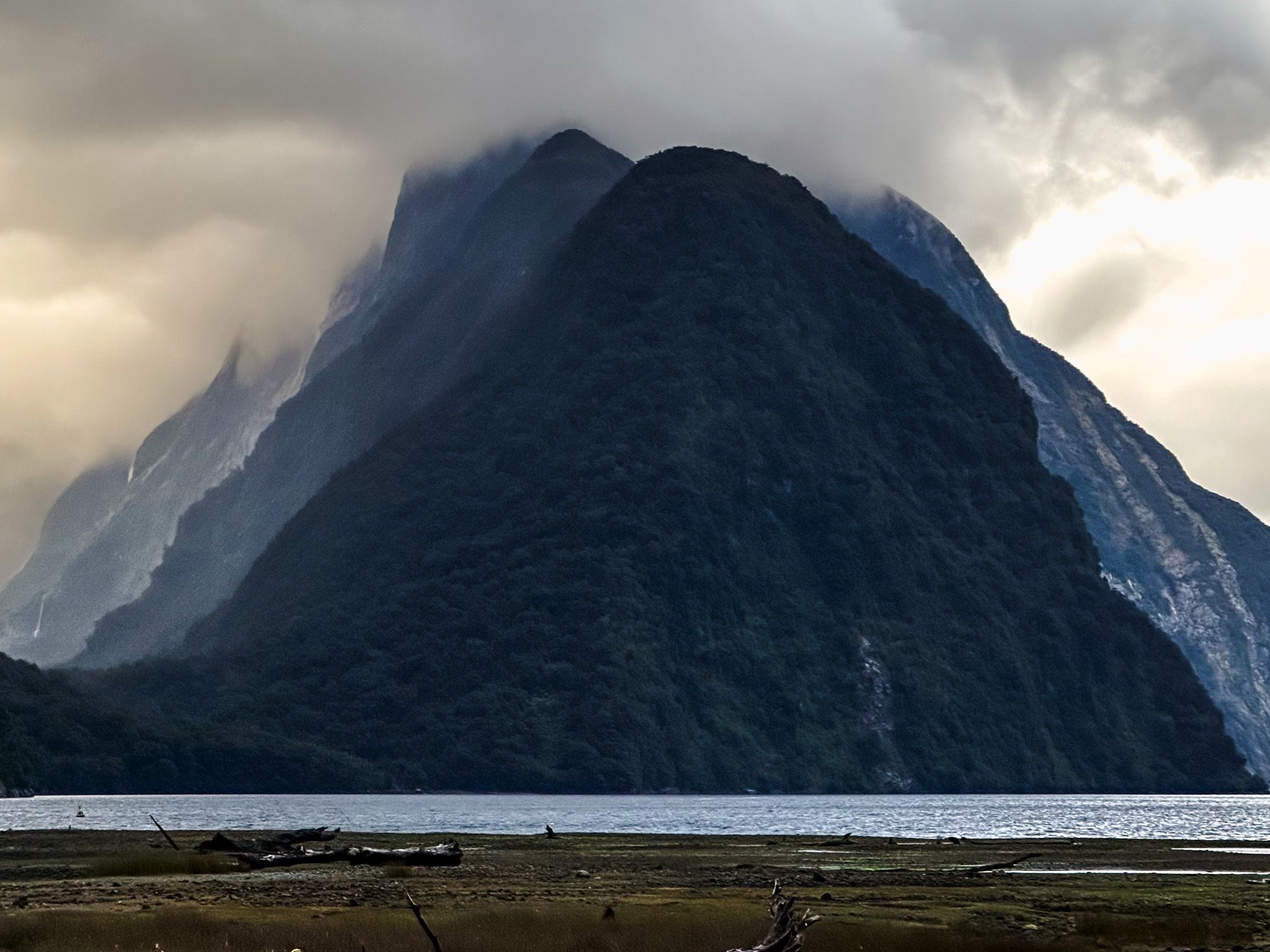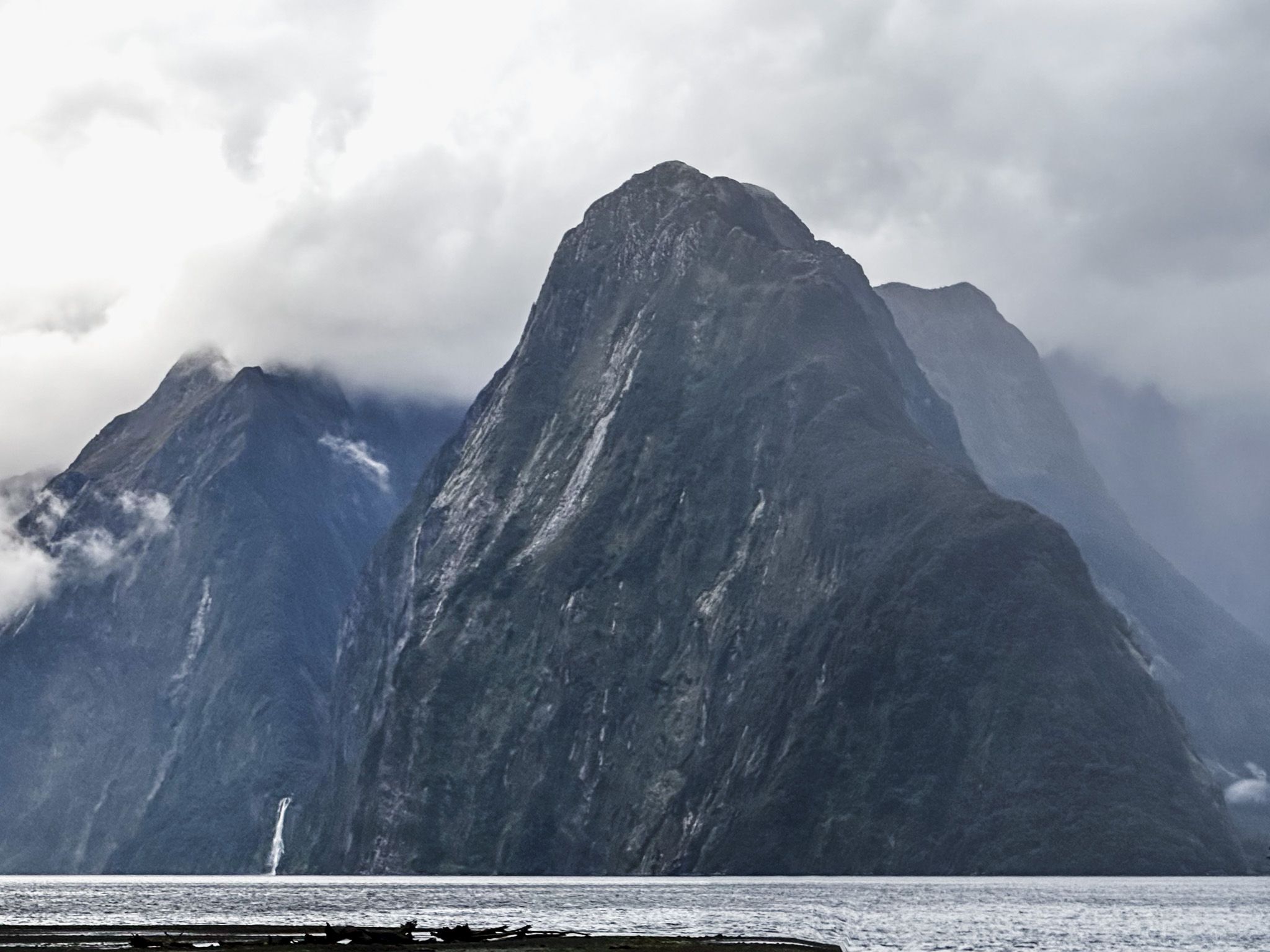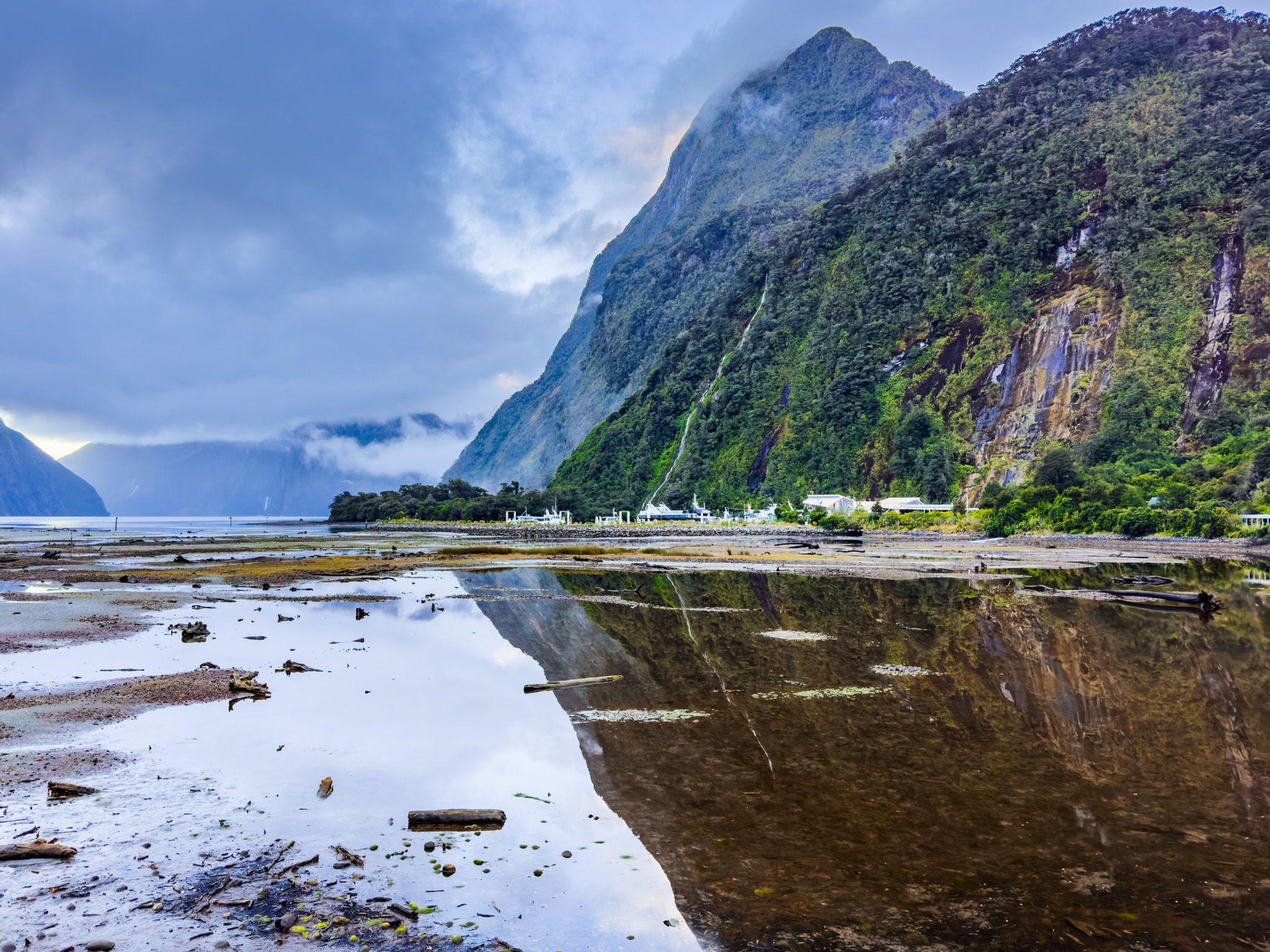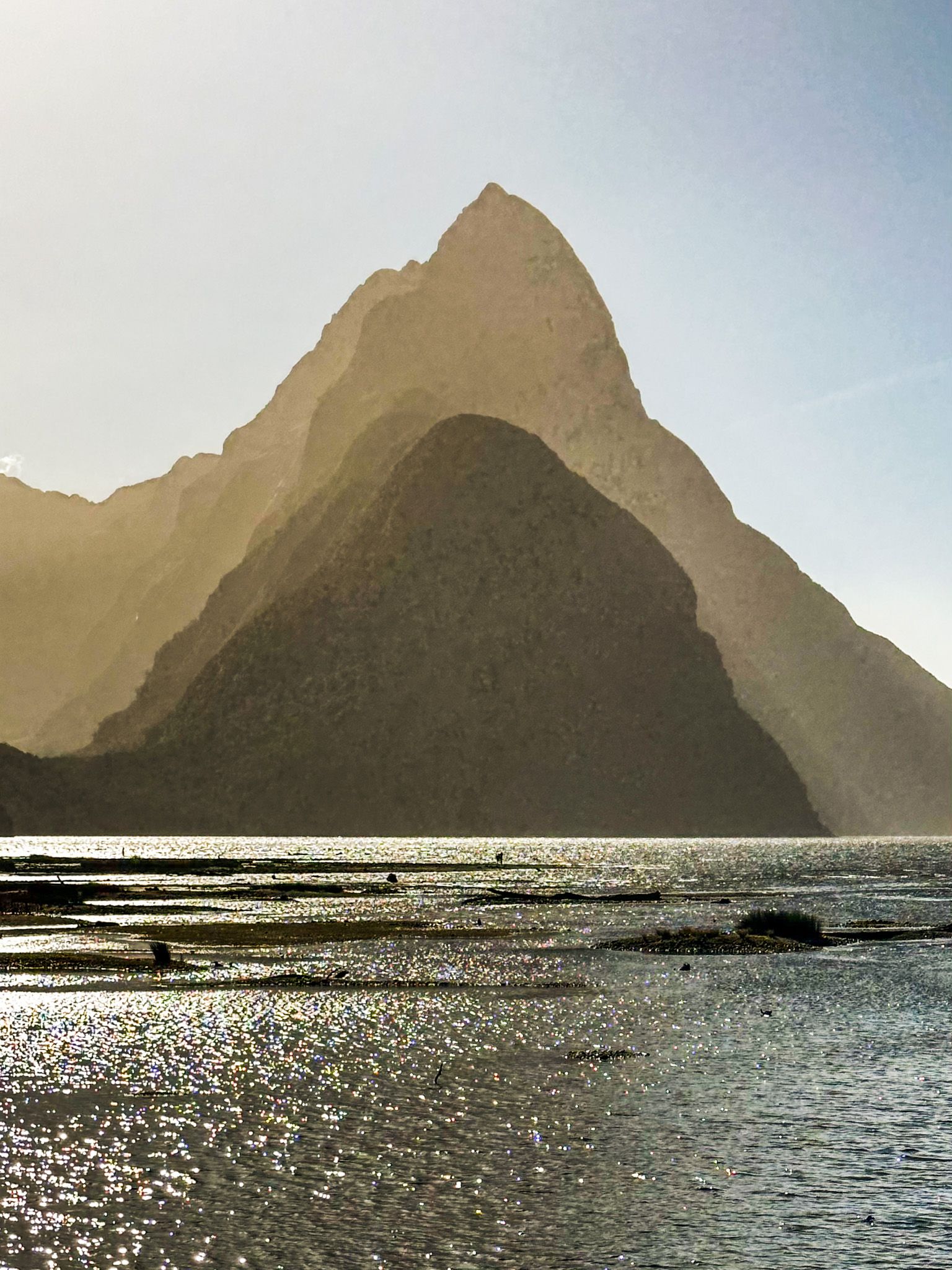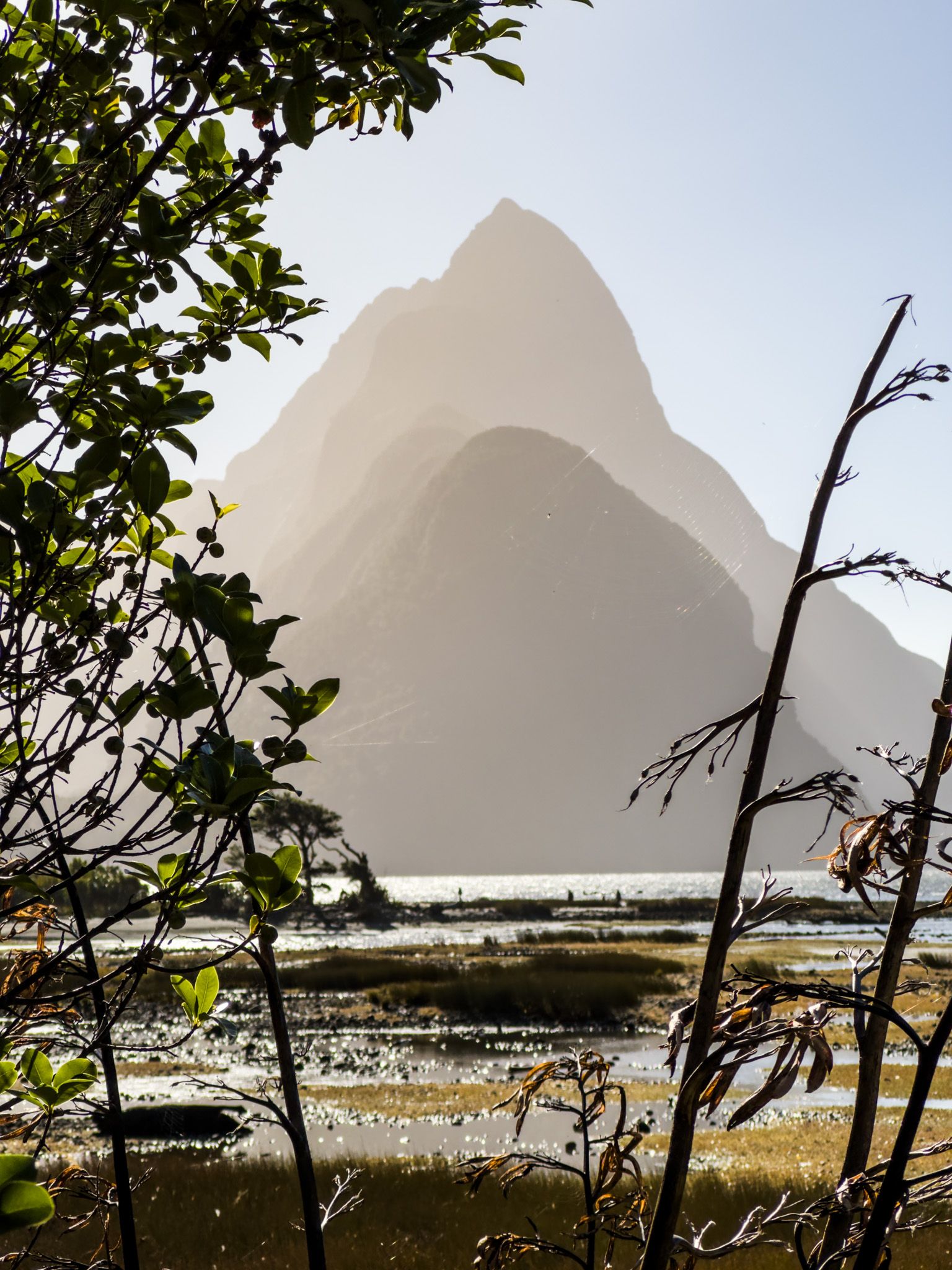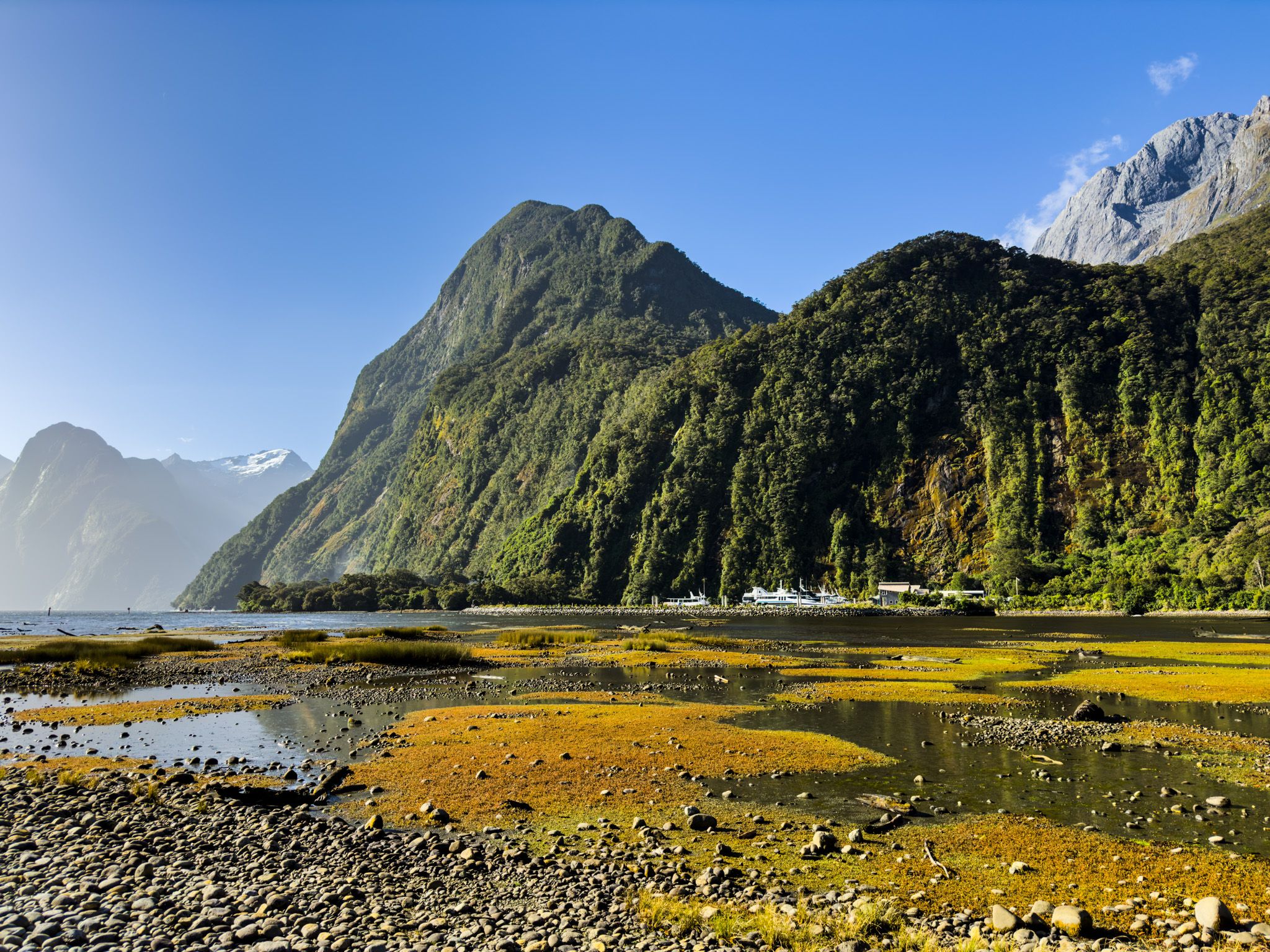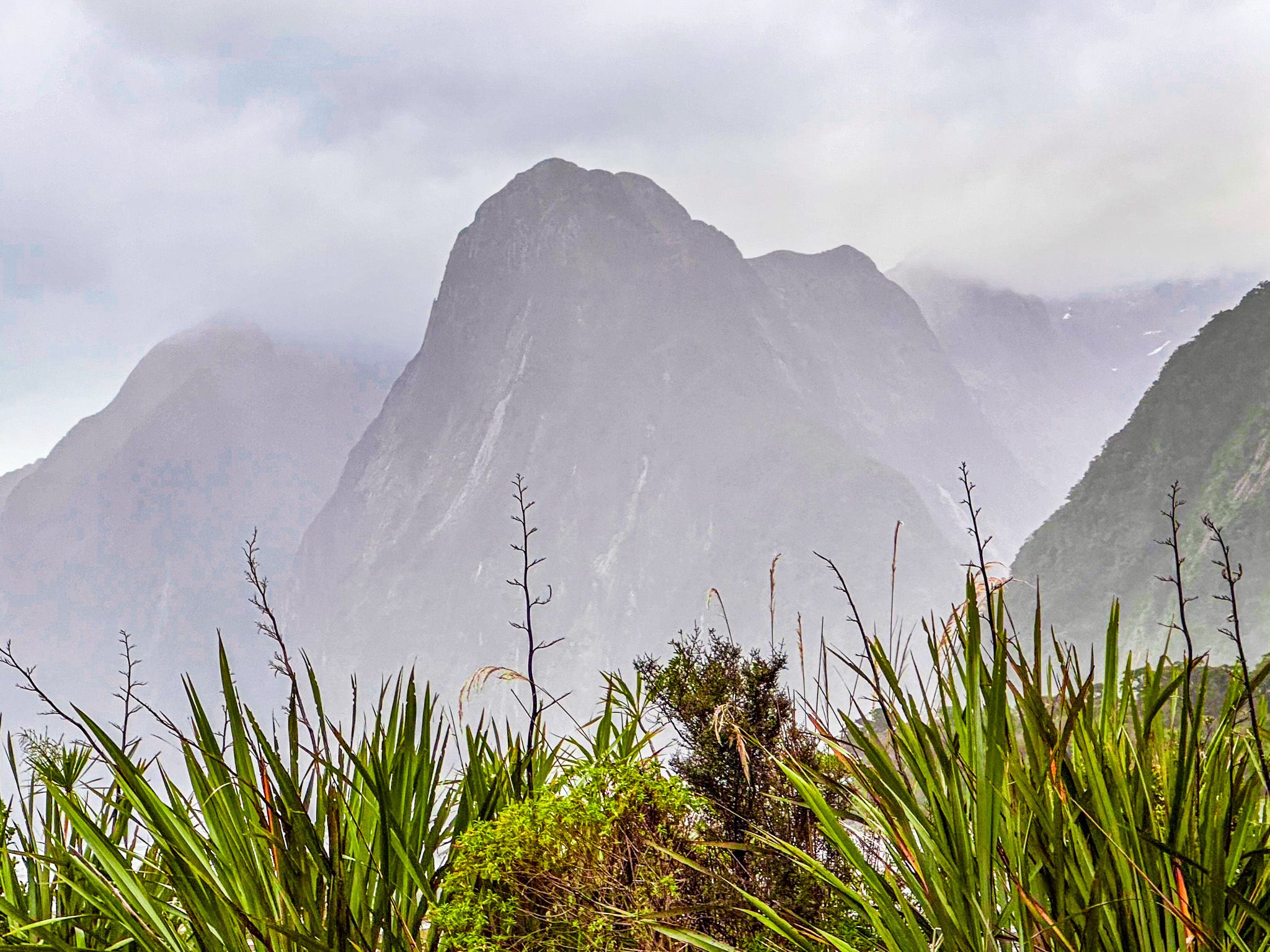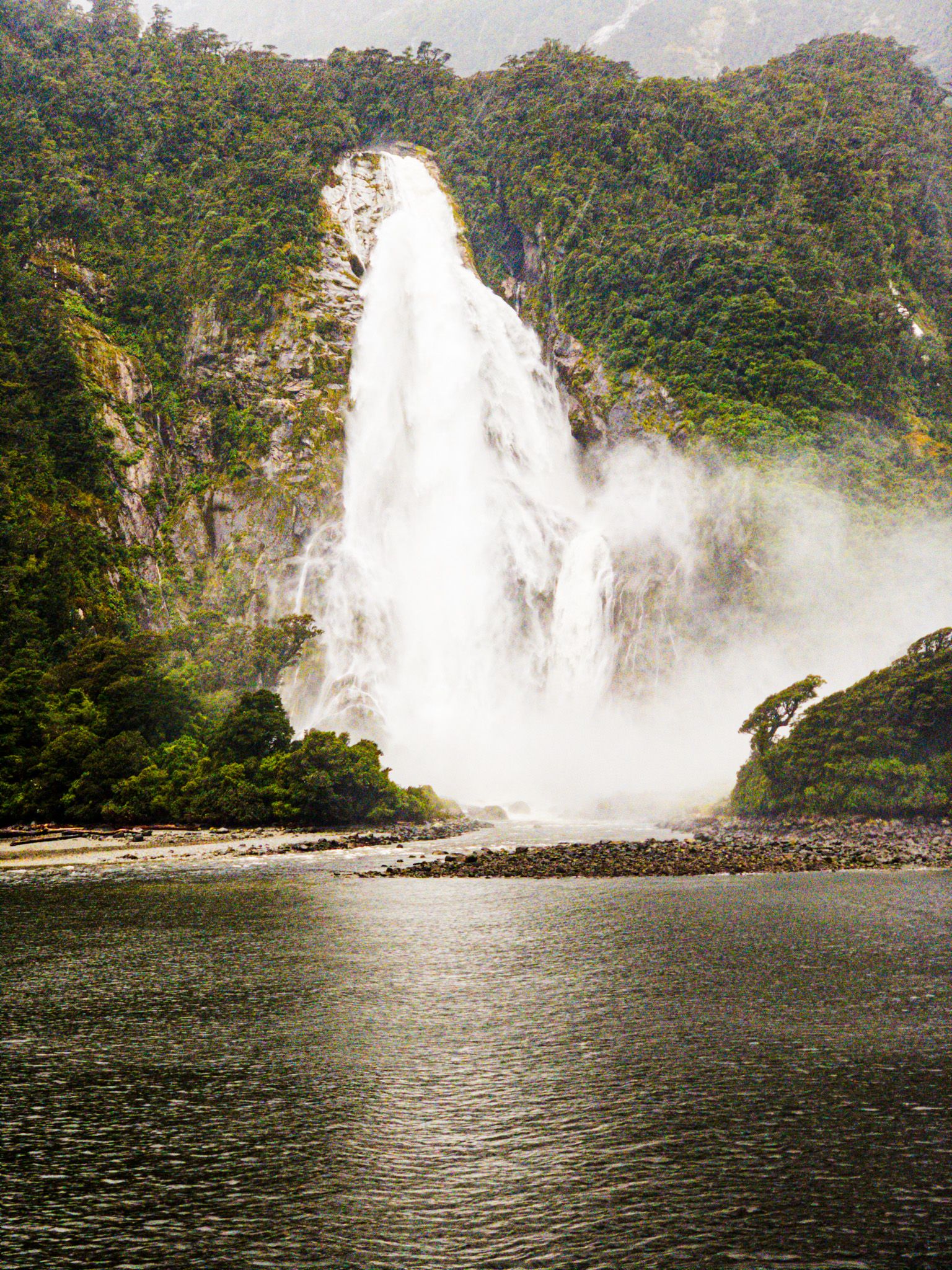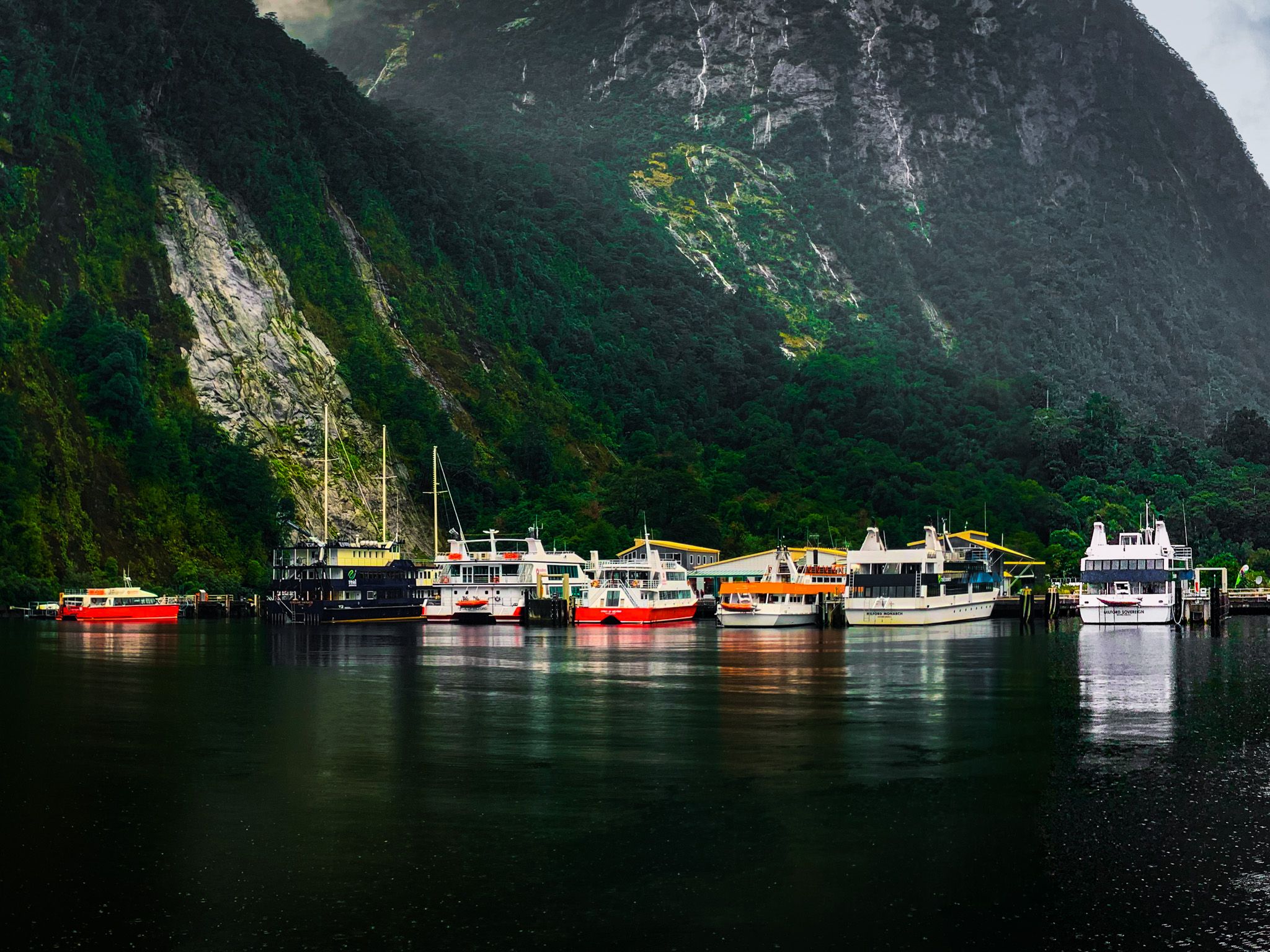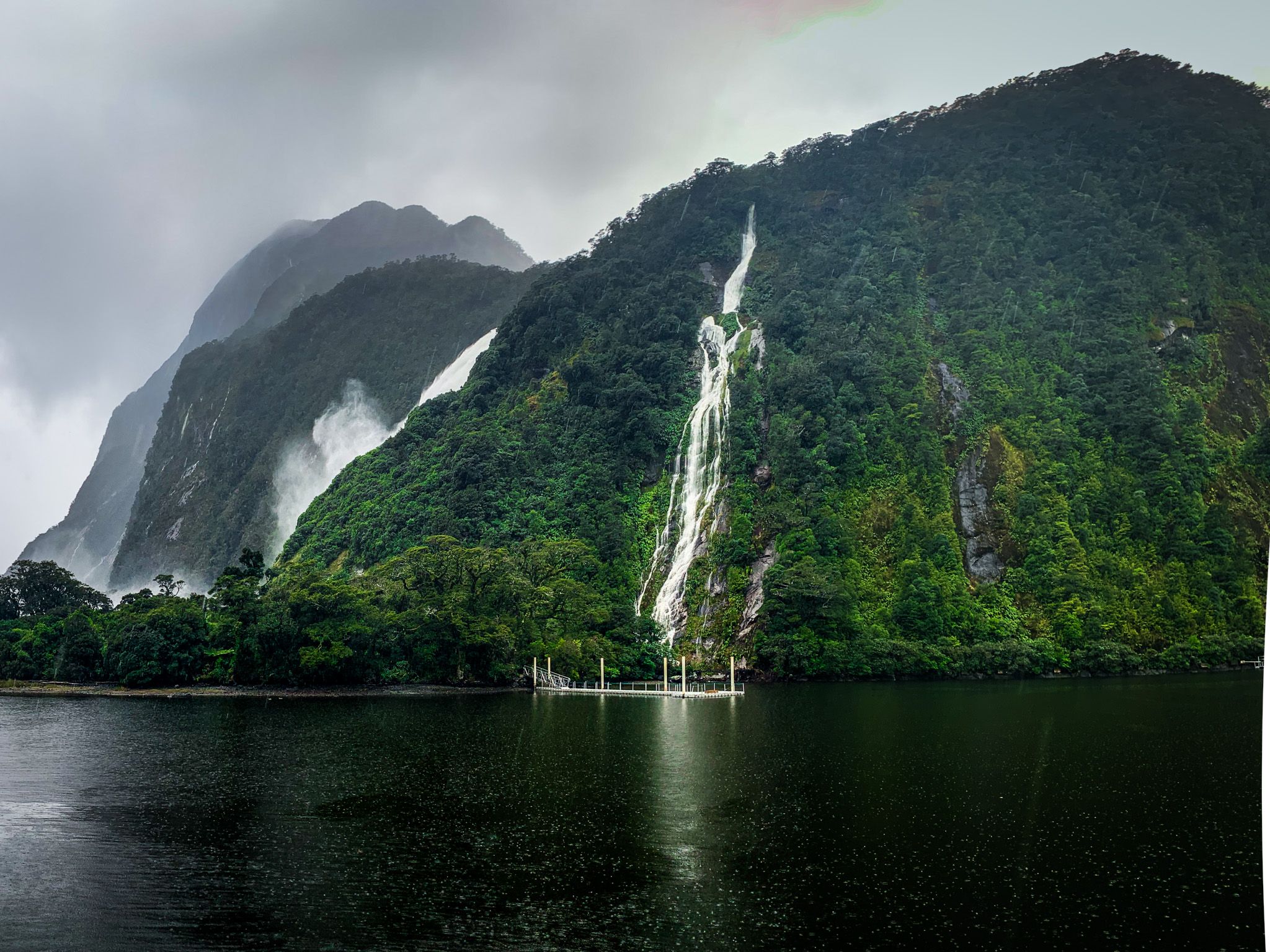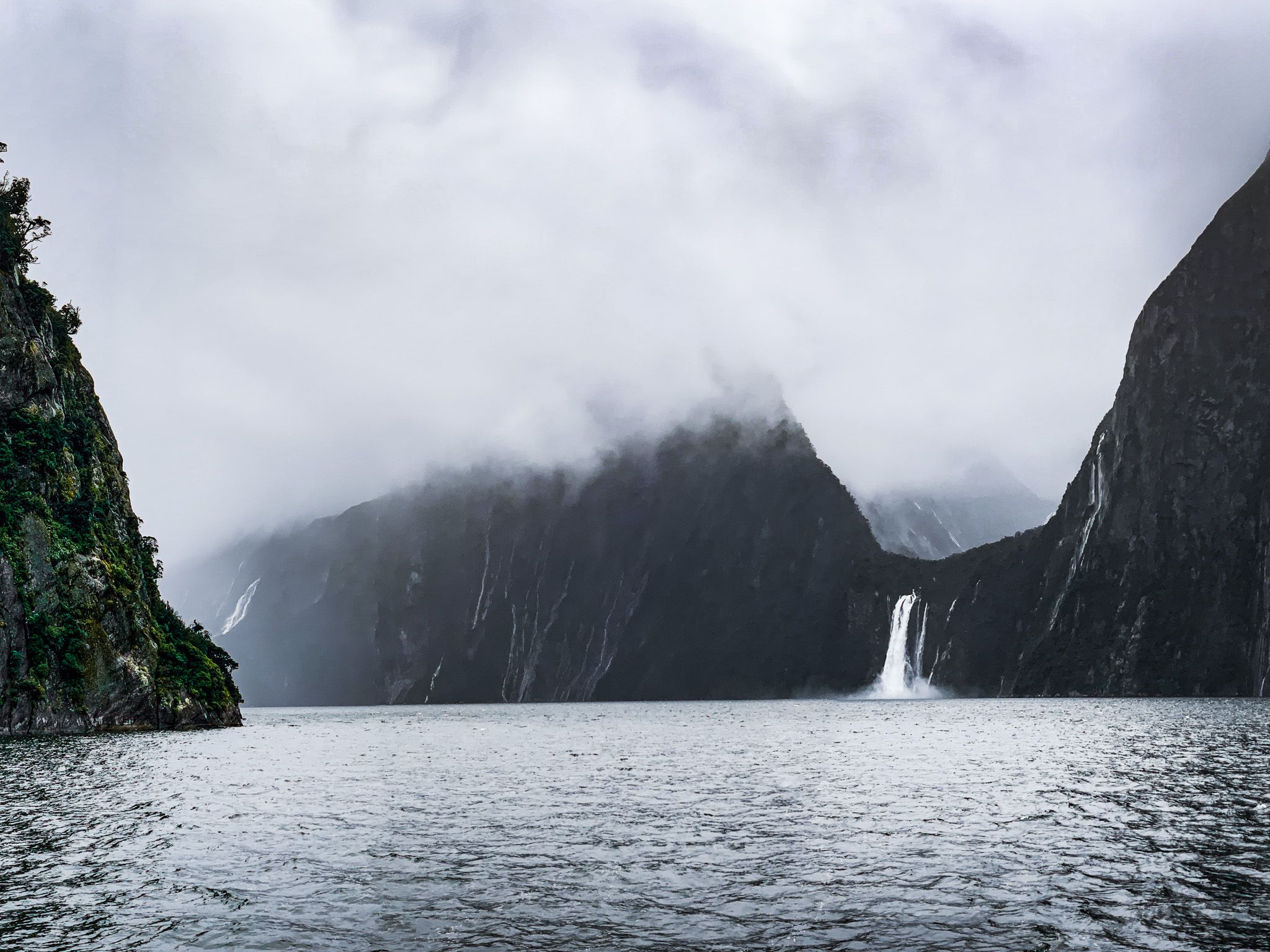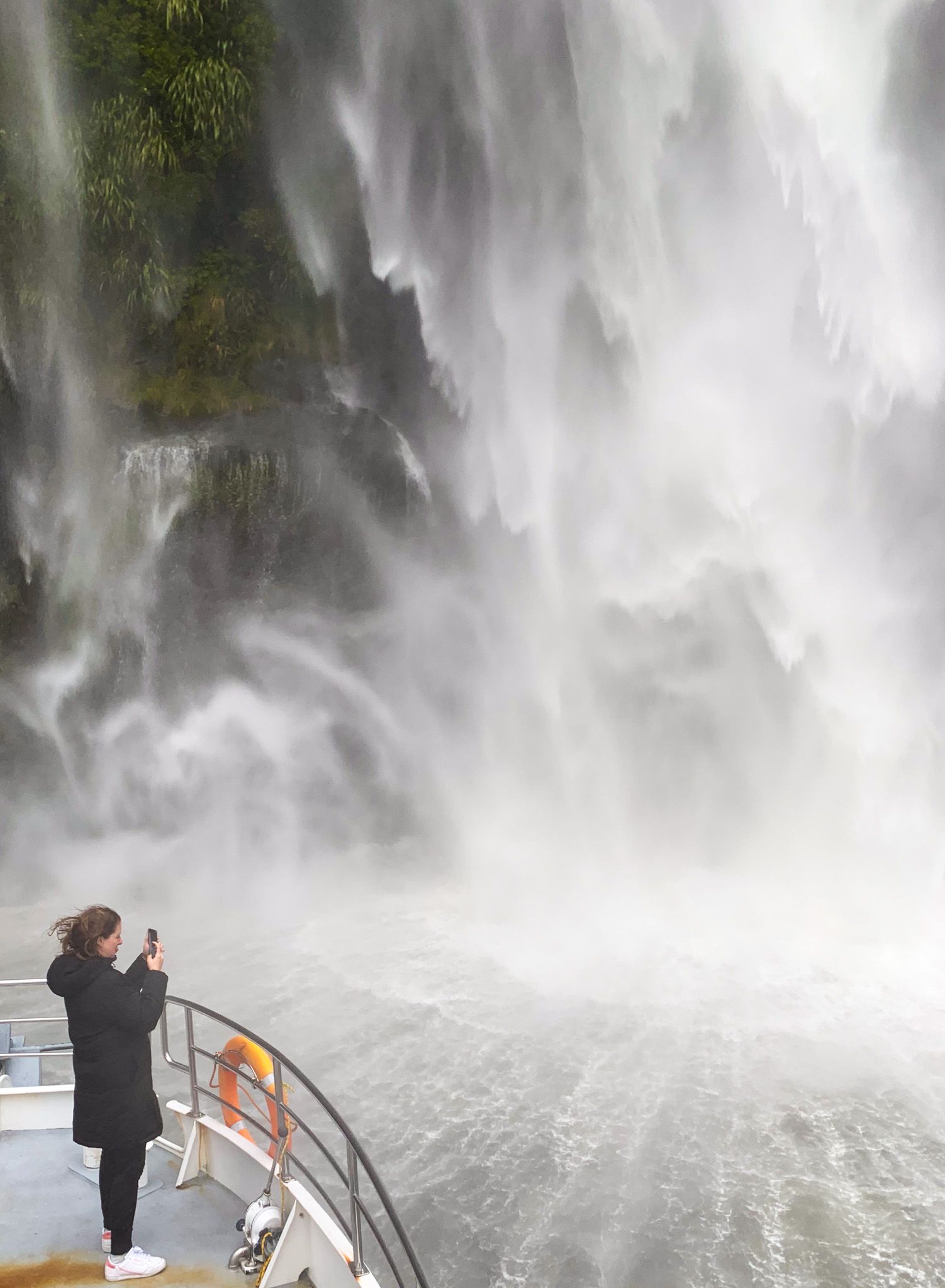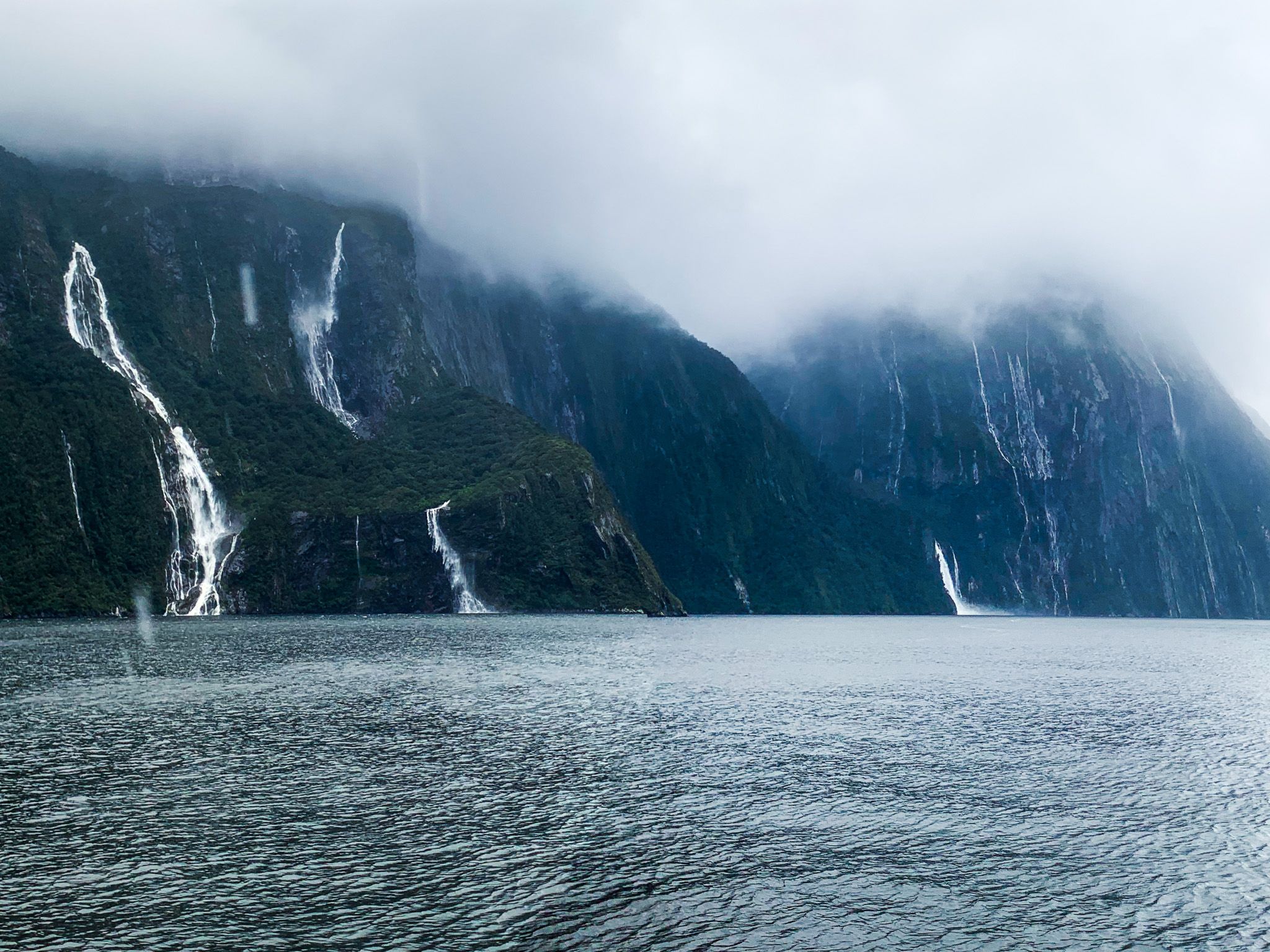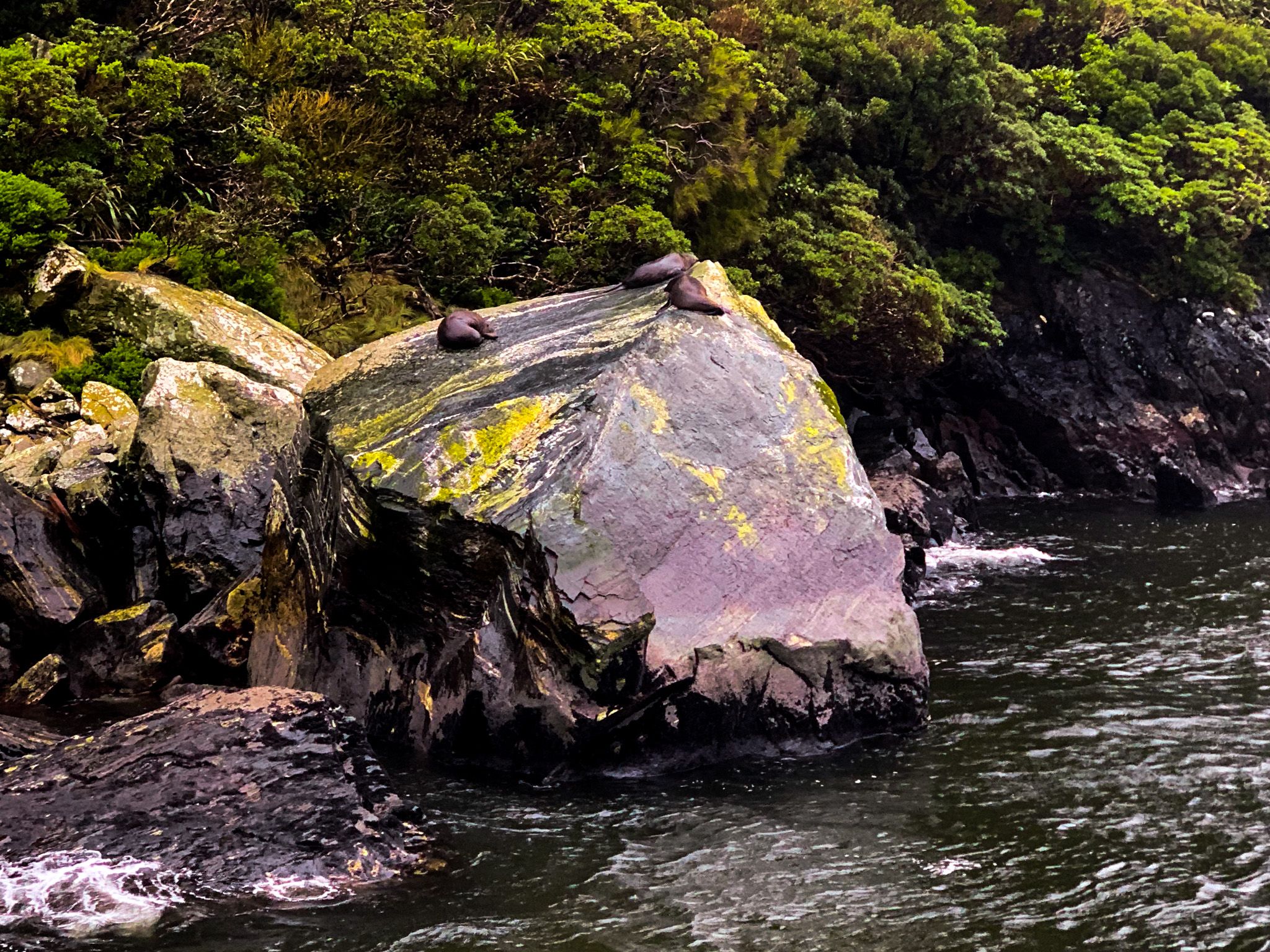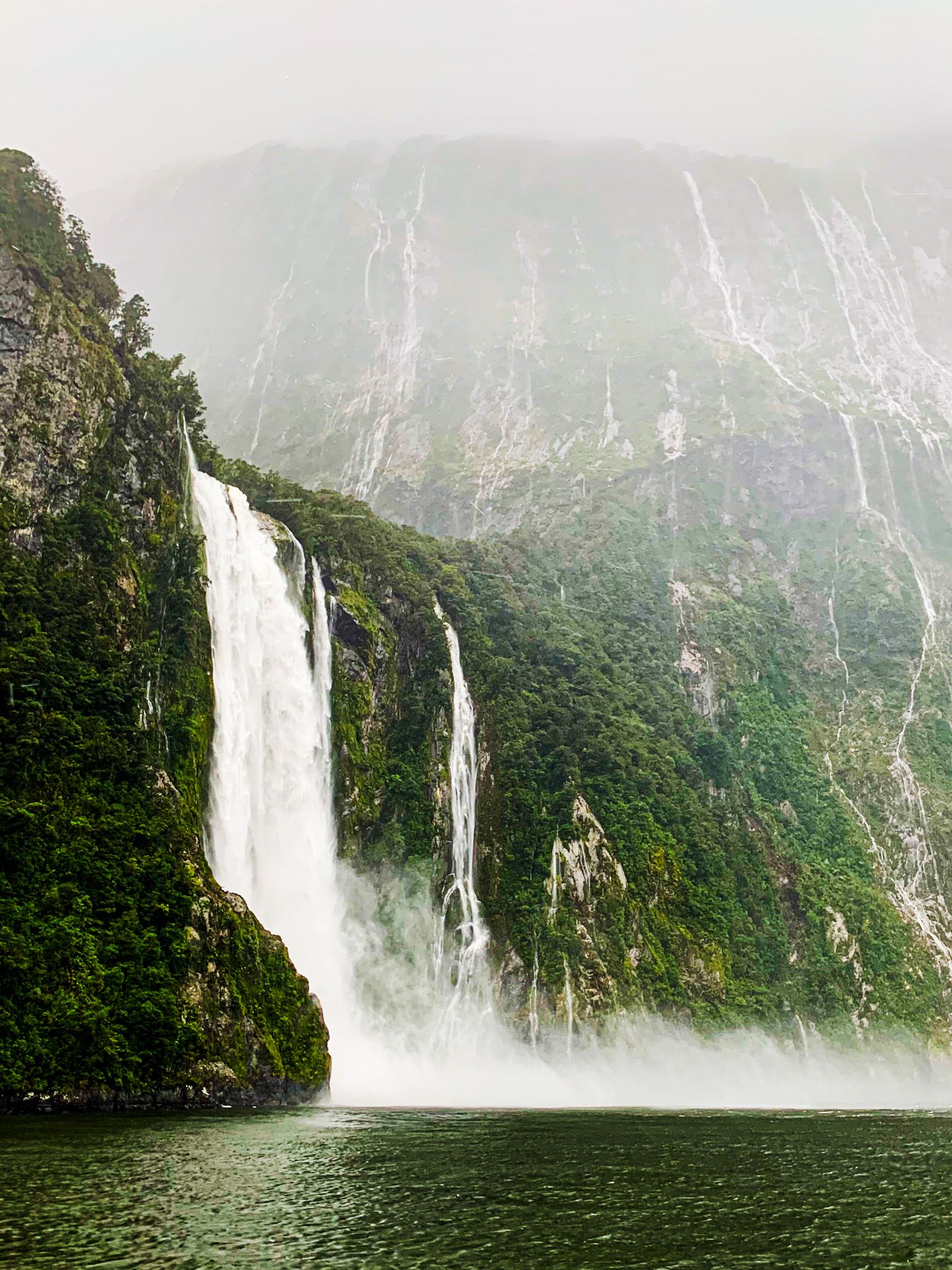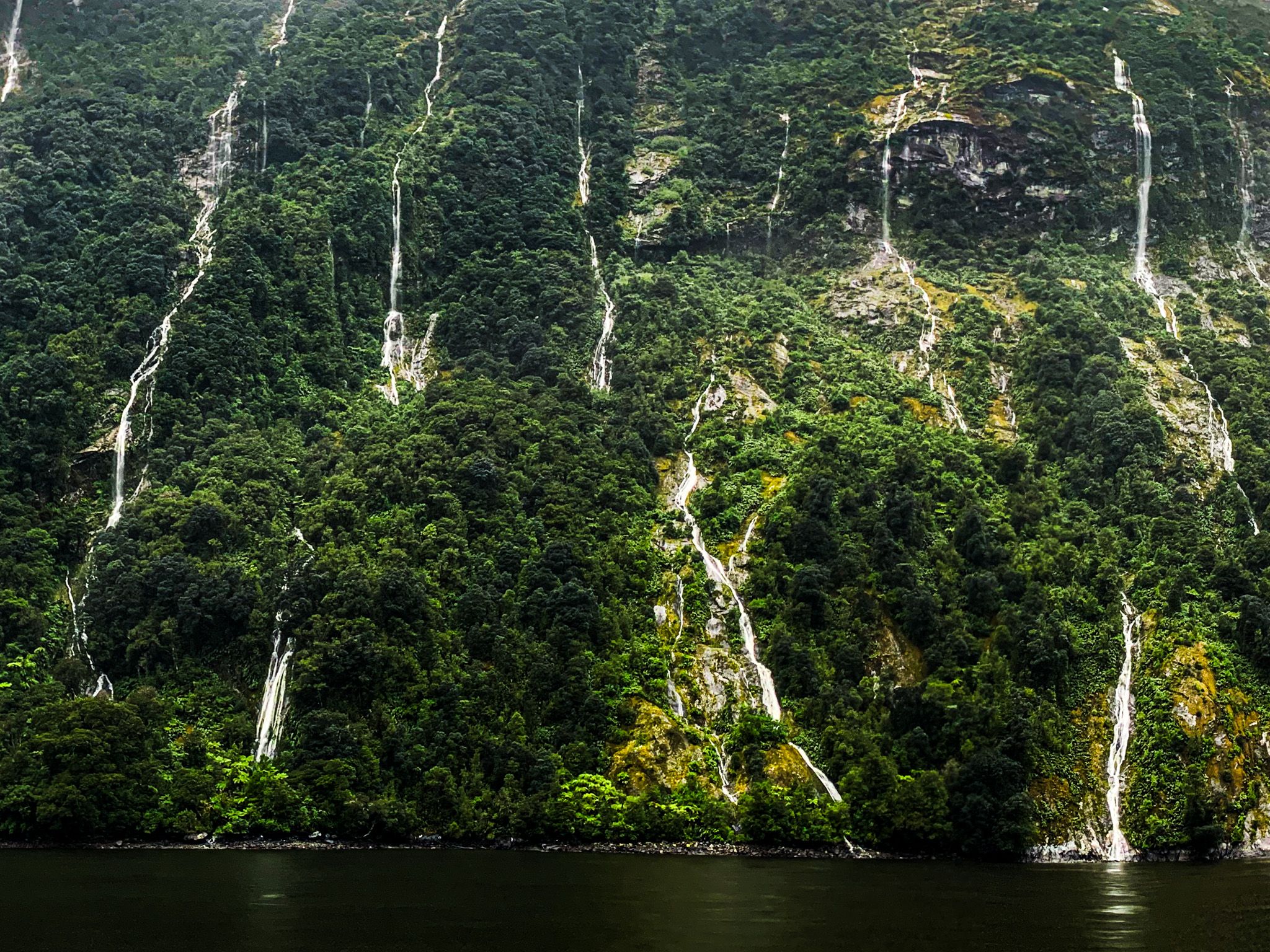Milford Sound / Piopiotahi is the best-known fiord in Fiordland and a crown jewel of New Zealand tourism. It sits on the southwest coast of the South Island, within the enormous Fiordland National Park and the even larger Te Waipounamu World Heritage Area. It is also a marine reserve.
It is famous because it is spectacular. From the coast to the small village and wharfs at the southern end, it is 15 km long and about 600 km wide at its narrowest point. Very steep mountain ranges, carved out by glaciers, crowd both sides of the sound with peaks as high as 1.700 metres on the south side and 1,500 metres on the north side. The best known is Mitre Peak, the prominent 1,683-metre peak that dominates the view from the shore. In addition, the water is deep at about 400 metres, apart from the entrance where an ancient glacial moraine lies just 27 metres below the surface. It is also a unique marine environment as the rain washes down large amounts of tannins from the surrounding forests that settle close to the surface. This makes the water very dark, allowing black coral at just 10 metres and encouraging other species that enjoy poor light.
James Cook was the first European to discover the sound entrance, but he thought taking a sailing ship in was too risky. In 1823, the sealer John Grono explored the region and named the sound after Milford Haven in his home country, Wales! Similarly, the Cleddau River is at the south end of the sound.
The Māori name Piopiotahi is much more romantic. It means “one piopio” and was restored in 1998. It arises from a Maui myth, where a piopio (a now-extinct bird) flew into the sound on Maui’s death to try and win immortality for humanity.
Once in Milford Sound, most visitors take a boat trip from the harbour at Freshwater Basin up the sound to the end. This takes around 2 hours and is fantastic. There are two big permanent waterfalls to visit: Bowen Falls (162 metres) and Stirling (151 metres). When it rains, it becomes a waterfall extravaganza. And it rains a lot, around 2.5 metres a year, and it can be up to 25 cm in 24 hours. You can also expect to see the most southerly bottlenose dolphins and seals. But there are other options. You can walk around the loop track or take a water taxi across Deepwater Basin to the end of the Milford track for a half-day walk to Giant Gate Falls.
Milford Sound attracts an enormous number of visitors, and many tour buses travel the road daily. The drive takes an hour and 45 minutes from Te Anau and 35 minutes from Marion Corner. The best times to avoid traffic are early morning, mid to late morning, and early evening. It is a day trip for most people, but there is a beautiful private campground and lodge. However, you generally need to book months in advance. Avoid NZ holidays!

